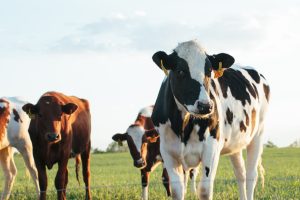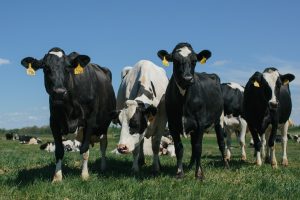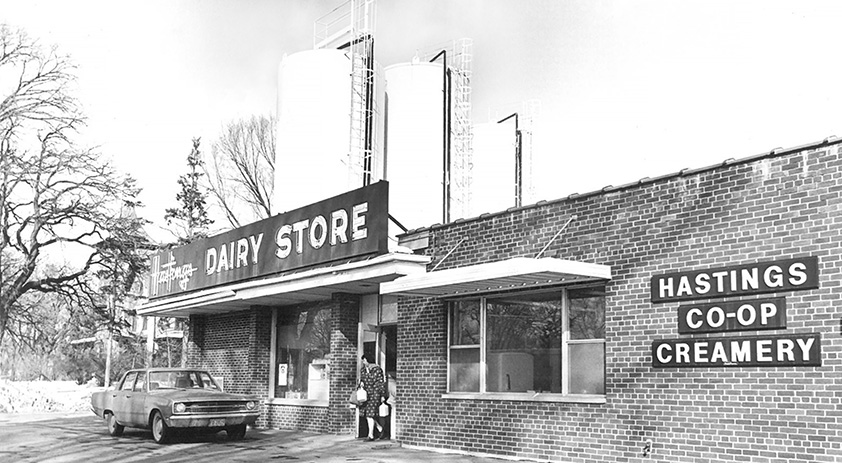
A legacy lost in the dairy heartlands, Hastings Creamery’s closure marks the end of an era.
The Hastings Creamery closure, after a remarkable 110-year service, has left the dairy communities of Minnesota and Wisconsin grappling with a sudden gap in their processing capabilities. This article examines the closure’s causes, its effects on local dairy farmers, and the ongoing efforts to revive the longstanding institution. Moreover, recent developments, including a devastating fire, have further complicated the situation, underscoring the urgency for a sustainable path forward. For more on the impacts of closures across many industries, check out this page.
The Hastings Creamery Closure: A Century-Old Institution’s End
The Hastings Creamery closure has abruptly ended a century-long legacy, creating an uncertain future for dairy farmers who relied on its services. This historic creamery’s shutdown has forced many into the precarious spot market, where they face the challenge of selling milk without the assurance of fair prices or consistent demand. Discover more about the challenges of market dynamics.

Farmers adrift in the spot market sea, seeking a harbor in the wake of the creamery’s demise.
The creamery, which began as a small operation, had grown into a vital part of the region’s agricultural fabric. Its products were a staple in local homes, and its economic contributions were significant. The closure not only affects the 40 dairy farms it serviced but also has a ripple effect on the local economy, from feed suppliers to transportation services. For the latest updates on the news in Minnesota.
The Domino Effect on Regional Dairy Farms
In the wake of the Hastings Creamery closure, dairy farmers across Minnesota and Wisconsin find themselves at a critical juncture. The creamery’s absence has pushed them towards the spot market, a move fraught with financial instability and uncertainty. This market is notorious for its fluctuations and often offers prices below the cost of production, leaving farmers in a precarious financial position. For insights into how local farms are adapting, follow this link.
Enjoying our insights?
Subscribe to our newsletter to keep up with the latest industry trends and developments.
Stay InformedFarmers are now faced with the daunting task of finding new buyers for their milk, a process that can be time-consuming and uncertain. The closure has also highlighted the need for more robust local processing options to protect farmers from such vulnerabilities in the future. Learn about the sustainability efforts in the world.
Environmental and Legal Challenges Preceding the Shutdown

Legal tangles and unpaid milk bills: the financial woes that led to a creamery’s downfall.
Environmental compliance issues, such as the wastewater dilemma that led to the creamery’s disconnection from the city’s sewer system, played a significant role in the closure. The situation has been compounded by legal challenges, including a substantial lawsuit from Valley Acres Dairy for unpaid milk deliveries, which underscores the financial difficulties leading up to the Hastings Creamery closure. For more on environmental challenges and legal challenges in the industry, explore these pages.
The wastewater issue that precipitated the closure was not an isolated incident; it was indicative of the aging infrastructure and the need for modernization within the industry. This incident has sparked a broader conversation about the sustainability of dairy processing facilities and the importance of environmental stewardship in the industry. Stay updated on the latest compliance news.
Rallying Community Support Following the Hastings Creamery Closure

Community and leaders unite, forging paths to revive a century-old dairy institution.
The response to the Hastings Creamery closure from local leaders and the community has been one of proactive support. Efforts are being made to find a solution that can help the dairy farmers affected by the closure and to explore avenues for the creamery’s potential revival. Mayor Mary Fasbender and Senator Judy Seeberger have been at the forefront of these efforts, working with state and local agencies to explore all possible options. The community has shown strong support, with residents flocking to the Hastings Dairy Store, signaling the creamery’s significant place in local culture.
Navigating the Future of Dairy Farming Post-Closure
The dairy industry in the region, already under pressure, now faces additional challenges following the Hastings Creamery closure. The search for new processing options and the hope for the creamery’s reopening are central to discussions among the less than 2,000 dairy farms that remain. The industry is exploring various avenues to adapt, including diversification of dairy products, exploring niche markets, and even direct-to-consumer sales models. These strategies are part of a broader effort to create a more resilient dairy sector that can withstand such shocks in the future. For a deeper dive into dairy processors’ strategies, follow this link.
A Community’s Hope for Creamery Revival
Despite the closure, there is a collective hope within the community for the Hastings Creamery’s return. The potential for new ownership and investment offers a beacon of hope for the creamery’s role in the local dairy economy to be restored. The creamery’s revival would not only mean the resumption of dairy processing but also the preservation of a historical business that has been a community landmark. The search for a new buyer is ongoing, with stakeholders optimistic that the creamery’s doors will not remain closed forever.
The Role of Local Government in Dairy Industry Stability
The local government is now tasked with a crucial role in ensuring the continuity of agricultural businesses and providing support to the dairy farms impacted by the Hastings Creamery closure. This includes exploring financial aid options, facilitating connections between farmers and new markets, and providing resources for business planning and transition.
Charting a Path Forward After the Creamery’s Closure

From ashes to hope: the fire at Hastings Creamery ignites a conversation on resilience and recovery.
The pursuit of a sustainable future for the local dairy industry continues, with the Hastings Creamery closure serving as a pivotal point for reflection and action. The community’s identity and the local economy are closely tied to the fate of the creamery, emphasizing the need for a viable resolution. In conclusion, the Hastings Creamery closure has highlighted the delicate balance of local economies and the importance of supporting agricultural sectors. The community’s efforts to navigate this challenging time reflect a deep-seated resilience and a commitment to preserving a vital part of their heritage. For the latest updates on the news in Wisconsin, click here.
Key Developments Since the Hastings Creamery Shutdown
In the wake of the Hastings Creamery closure, several key developments have emerged, shaping the narrative of this century-old institution’s impact on the local dairy industry. These developments provide insights into the ongoing efforts to address the fallout and the community’s resilience in facing these challenges.
- Legal Proceedings: The lawsuit filed by Valley Acres Dairy for unpaid milk deliveries has progressed, bringing to light the financial struggles that contributed to the creamery’s closure. The outcome of this legal action may set a precedent for how such disputes are resolved in the dairy industry.
- Government Intervention: State and local officials have stepped in to offer support to the displaced dairy farmers, exploring avenues for emergency funding and alternative markets. This intervention underscores the government’s role in agricultural stability and the importance of a safety net for farmers facing market disruptions.
- Community Response: The community has rallied around the affected farmers, with local businesses and consumers seeking ways to support them through direct purchases and advocacy. This groundswell of support reflects the tight-knit nature of the community and the recognition of the creamery’s importance to the local economy.
- Search for New Ownership: Efforts to find a new buyer for Hastings Creamery have intensified, with potential investors expressing interest in reviving the creamery. The search for a buyer who can navigate the modern dairy market’s complexities remains a focal point for the community’s hopes.
- Infrastructure and Sustainability: Discussions about the need for updated infrastructure and sustainable practices in dairy processing have gained momentum. The wastewater issue that contributed to the creamery’s closure has sparked a broader dialogue on environmental responsibility and the need for investment in modern facilities.
- Market Adaptation: Dairy farmers have begun exploring new business models, including cooperative structures and niche product markets, to adapt to the absence of Hastings Creamery. These adaptations may lead to a more diversified and resilient dairy industry in the region.
- Cultural Impact: The creamery’s closure has not only economic but also cultural implications, with residents mourning the loss of a local landmark. Efforts to preserve the creamery’s history are underway, with initiatives to document its century-long presence in the community.
- Recent Fire Incident: A fire broke out at the creamery’s premises, causing significant damage and adding to the challenges faced by the dairy community. The fire, which occurred after the creamery’s closure, was battled by crews from multiple fire departments. The State fire marshal’s investigation into the blaze is ongoing, with the community awaiting the results to understand the full impact and future implications for the site.
Explore External Resources and Insights
For a deeper understanding of the dairy farming landscape in Minnesota and the resources available to those in the industry, consider exploring the following external resources:
- For insights into the history and operations of Hastings Creamery, visit their official website.
- To understand the impact of the creamery’s closure on local dairy farms, read the article from Dairy Herd Management.
- For legal updates regarding the lawsuit filed by a Minnesota dairy farm against Hastings Creamery, see the Pioneer Press report.
- Explore the challenges faced by farmers following the creamery’s closure in this Wisconsin Farmer article.
- For more information on the fire incident at the creamery’s facility, refer to the Star Tribune coverage.
- For insights into the support systems available for Minnesota’s dairy milk producers, including crisis assistance and advocacy, visit the Minnesota Department of Agriculture.
- To learn about the initiatives and support provided by the Minnesota Milk Producers Association, including market information and news relevant to dairy farmers, check out Minnesota Milk Producers Association.
- Understand the regulatory landscape and get monthly updates on dairy farm permits with the Minnesota Dairy Farm Activity Report by the Minnesota Department of Agriculture.




















